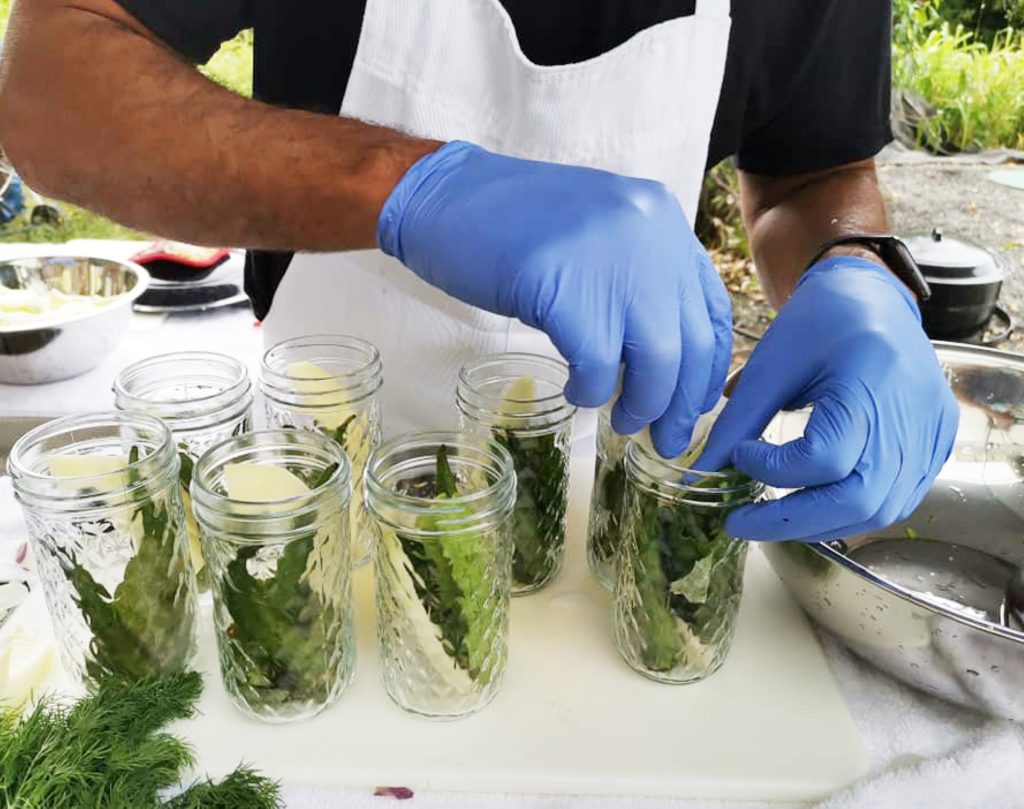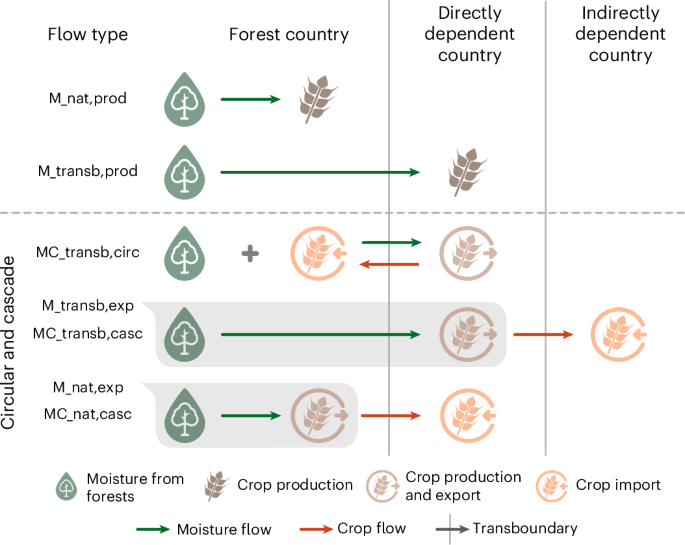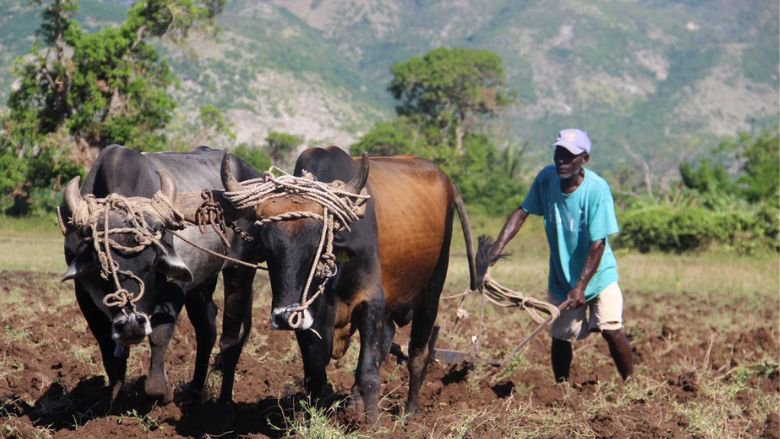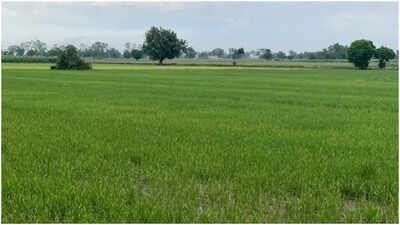Report on Hawai‘i’s Sustainable Agriculture and Food Security Conferences
Advancing Sustainable Development Goals Through Local Food Initiatives
Two statewide organizations, Hawai‘i Master Food Preservers and Hawai‘i Tropical Fruit Growers, are hosting consecutive annual conferences to advance local food production and utilization. These events directly support several United Nations Sustainable Development Goals (SDGs) by fostering a resilient and sustainable local food system.
- SDG 2: Zero Hunger: Enhancing food security and promoting sustainable agriculture through local production and preservation.
- SDG 8: Decent Work and Economic Growth: Creating opportunities for local entrepreneurs within the cottage food industry.
- SDG 12: Responsible Consumption and Production: Reducing food waste through preservation techniques and promoting sustainable local supply chains.
- SDG 15: Life on Land: Advocating for agricultural practices that improve soil health and crop quality.
- SDG 17: Partnerships for the Goals: Fostering collaboration between producers, government agencies, and research institutions.
Hawai‘i Master Food Preservers Conference: A Focus on Food Security and Economic Empowerment
Contribution to SDG 2 (Zero Hunger) and SDG 12 (Responsible Consumption and Production)
The inaugural Hawai‘i Master Food Preservers conference on October 23 is designed to strengthen local food security by reducing post-harvest loss. By teaching methods for canning, pickling, fermenting, and dehydrating, the conference directly addresses SDG 12 by promoting production patterns that minimize waste. Key sessions will focus on:
- Value-added product development
- Critical food safety protocols
- Updates from the U.S. Department of Agriculture and the U.S. Pacific Basin Agricultural Research Center
Supporting SDG 8 (Decent Work and Economic Growth)
The conference provides a platform for economic empowerment by supporting the growth of the local cottage food industry. It aims to equip budding entrepreneurs with the knowledge to market their products, thereby fostering sustainable local economic growth. Key information includes:
- Guidance on new state cottage industry laws
- Insights from a panel on successful preserved food products
- Presentations from industry leaders on fostering Hawai‘i food sustainability
Hawai‘i Tropical Fruit Growers Conference: Promoting Sustainable Agricultural Practices
Enhancing Production in Line with SDG 2 (Zero Hunger) and SDG 15 (Life on Land)
The 35th annual Hawai‘i Tropical Fruit Growers conference, held from October 24-26, focuses on sustainable agricultural methods to increase crop yields and quality. This aligns with SDG 2 by improving food availability and SDG 15 by promoting practices that maintain ecosystem health. The educational agenda includes:
- Presentations on creating healthy soil and growing high-quality crops.
- A keynote address by Yoshimi Yonemoto on advanced techniques for pruning, pollination, and prediction to increase fruit production.
- A trade show featuring innovations in sustainable agriculture.
- A tour of local farms demonstrating sustainable practices in action.
Building Resilient Food Systems Through SDG 17 (Partnerships for the Goals)
This gathering serves as a critical nexus for farmers, educators, and orchard managers to collaborate and share knowledge. It strengthens partnerships essential for a resilient agricultural sector. Discussions will cover:
- New local research findings
- Legislative updates affecting the agricultural community
- Strategies for addressing agricultural theft
SDGs Addressed or Connected
Explanation
- SDG 2: Zero Hunger: The article’s central theme is strengthening the local food system in Hawai’i. It discusses increasing the production of local produce (“Produce More Fruit”) and promoting sustainable agriculture (“creating healthy soil and quality crops”). It also focuses on food preservation, which enhances food security and availability.
- SDG 8: Decent Work and Economic Growth: The conferences aim to foster local economic development by supporting “budding entrepreneurs” and the “local food cottage industry.” By providing information on “value-added product development” and “new state cottage industry laws,” the events promote the creation of small-scale enterprises and local jobs.
- SDG 12: Responsible Consumption and Production: The Hawai‘i Master Food Preservers conference directly addresses the issue of food waste by teaching methods like canning, pickling, fermenting, and dehydrating. These techniques reduce post-harvest losses and ensure that local produce is used efficiently, aligning with sustainable consumption and production patterns.
- SDG 17: Partnerships for the Goals: The article highlights a collaborative effort between multiple stakeholders. Two statewide organizations are holding conferences featuring speakers from government bodies (U.S. Department of Agriculture), research centers (U.S. Pacific Basin Agricultural Research Center), and the private sector (KTA, Maui Innovation Center). This multi-stakeholder partnership is crucial for achieving sustainable development.
Specific SDG Targets
Explanation
- Target 2.3: By 2030, double the agricultural productivity and incomes of small-scale food producers. The Hawai‘i Tropical Fruit Growers conference is geared toward farmers and orchard managers, with a keynote on how to “Produce More Fruit.” The food preservers conference helps “budding entrepreneurs” create and sell products, directly supporting the growth and income of small-scale food producers.
- Target 2.4: By 2030, ensure sustainable food production systems and implement resilient agricultural practices. The conference for fruit growers, which includes educational offerings on “creating healthy soil and quality crops” and is aimed at “proponents of sustainable agriculture,” directly supports this target.
- Target 8.3: Promote development-oriented policies that support productive activities, decent job creation, entrepreneurship… and encourage the formalization and growth of micro-, small- and medium-sized enterprises. The article highlights the food preservers conference as an opportunity for entrepreneurs to learn about the “local food cottage industry,” including “new state cottage industry laws” and how to sell their products, which aligns with fostering small enterprise growth.
- Target 12.3: By 2030, halve per capita global food waste at the retail and consumer levels and reduce food losses along production and supply chains, including post-harvest losses. The focus of the Hawai‘i Master Food Preservers on techniques like “canned, pickled, fermented, dehydrated and frozen products” is a direct strategy to reduce post-harvest food loss.
- Target 17.17: Encourage and promote effective public, public-private and civil society partnerships. The collaboration mentioned between the two non-profit organizations, the USDA, agricultural research centers, and private sector champions like Derek Kurisu of KTA exemplifies the multi-stakeholder partnerships needed to achieve the SDGs.
Indicators for Measuring Progress
Explanation
- For Target 2.3: The article implies progress can be measured by the increase in fruit production resulting from new techniques (“Pruning, Pollination and Predictions to Produce More Fruit”) and the growth in income for local entrepreneurs selling preserved food products in “retail stores, online and farmers markets.” An indicator would be the volume and value of local food products sold by conference attendees.
- For Target 8.3: A clear implied indicator is the number of new small businesses or “cottage industry” enterprises established by the “budding entrepreneurs” who attend the conference. The article points to this by framing the conference as a place to “discover our evolving local food cottage industry.”
- For Target 12.3: Progress towards this target is implied through the adoption of food preservation techniques. An indicator would be the quantity of local produce that is preserved (canned, pickled, dehydrated, etc.) by attendees, thereby preventing it from becoming post-harvest waste.
- For Target 17.17: The article itself serves as an indicator of partnership by listing the diverse participants. A measurable indicator would be the number and type of organizations (public, private, non-profit, academic) actively participating in and contributing to the conferences.
SDGs, Targets, and Indicators Summary Table
| SDGs | Targets | Indicators (Implied from the article) |
|---|---|---|
| SDG 2: Zero Hunger | 2.3: Double the agricultural productivity and incomes of small-scale food producers. 2.4: Ensure sustainable food production systems. |
Increase in fruit production from applying new techniques; Number of farmers adopting sustainable practices like “creating healthy soil.” |
| SDG 8: Decent Work and Economic Growth | 8.3: Promote policies that support entrepreneurship and the growth of small enterprises. | Number of new “cottage industry” businesses created by conference attendees. |
| SDG 12: Responsible Consumption and Production | 12.3: Halve food waste and reduce food losses, including post-harvest losses. | Volume of local produce preserved through canning, pickling, dehydrating, etc. |
| SDG 17: Partnerships for the Goals | 17.17: Encourage effective public, public-private and civil society partnerships. | Number and diversity of organizations (e.g., USDA, research centers, private businesses) collaborating in the events. |
Source: bigislandnow.com







